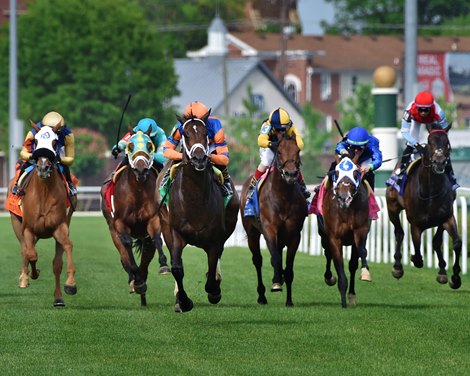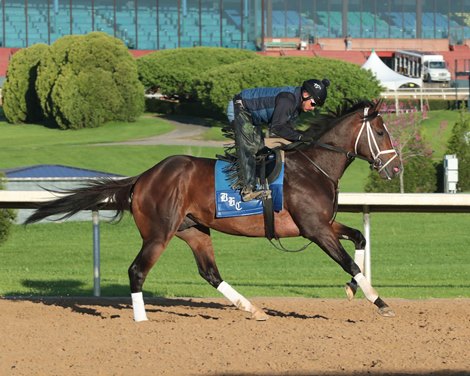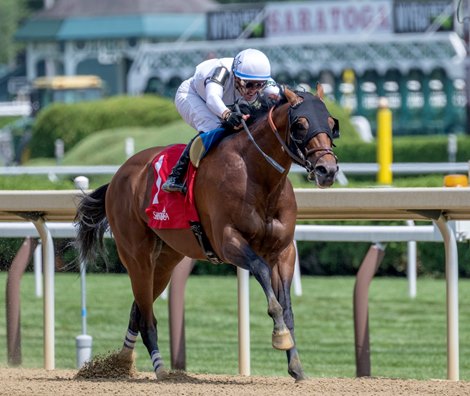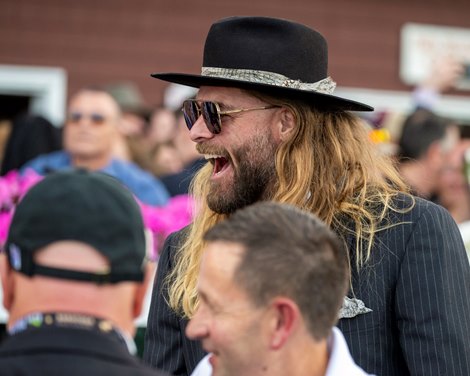Churchill Downs is again working to fix the root cause behind its beleaguered turf course with the expectation it will be ready for the spring meet and sustain the toll of three seasons of racing.
The track’s turf was installed with sod in the fall of 2021 and received a positive reception the following spring. However, it was unable to handle the planned usage with noticeable wear and tear during the 2022 spring meet. As a result, turf racing at Churchill Downs was scaled back and there was only dirt racing during the track’s 2022 September meet before limiting turf racing for the 2022 fall meet.
After again limiting turf racing in November because of the turf being “very loose,” according to Churchill Downs senior director of communications and media services Darren Rogers, the Louisville track has recently begun to implement new procedures that it believes will resolve the issues that have haunted it.
“After the meet ended we realized the causation was the roots were not going deep enough and growing deep enough into the growing medium,” Rogers said. “They were going about three inches deep. The roots and the organic were too thick and they were just kind of sitting up there in the top.”
Once the meet concluded, track superintendent Jamie Richardson and other track officials met with consultants. The end result was to cut the grass very short and use a machine aerator called Dryject. According to the Dryject website, it “uses a high-speed, water-based injection system to blast aeration holes through the root zone to fracture the soil.” Dryject “simultaneously fills holes to the surface with high volumes of sand or amendment.”
Sign up for BloodHorse Daily
Churchill Downs went six inches down and injected different angular sand to provide stability to make the turf less loose, said Rogers. In March, Churchill Downs will Dryject the course again.
The next step was to verticut the grass. This is the process of using vertical blades to remove organic buildup which contributed to the roots not growing deep enough.
The turf course was then sanded and seeded at the start of the year followed by more angular sand as a top dressing. The course was then solid-tine aerated, which is done with metal stakes that go about six inches deep. Rogers said this process took place at the start of last week.
Next, the course was seeded, fertilized and covered with growth blankets which keep the turf 25 degrees warmer than the air temperature.
“The growth blankets give us about a six-week head start instead of waiting for the Bermuda (grass) to come out of its dormancy. … The course has performed well in the early spring but the challenge has been racing with three different seasons,” Rogers said.
He added, “The team has learned that we have to be a little more vigilant in managing the organic material once you get past that spring meet.”
The Tahoma 31 Bermuda grass was overseeded with fescue and bluegrass and “we’re learning along the way of what’s worked, what hasn’t worked. And clearly we know what hasn’t worked,” Rogers said.
But all of these efforts will be for naught if turf horse owners don’t have the confidence that the course will hold up, or even worse—it doesn’t.
“Right now everything appears to be going according to plan in discussions with our consultants. We’ve invested $10 million into this course and nobody wants it to perform at its maximum more than we do,” Rogers said.










Leave feedback about this